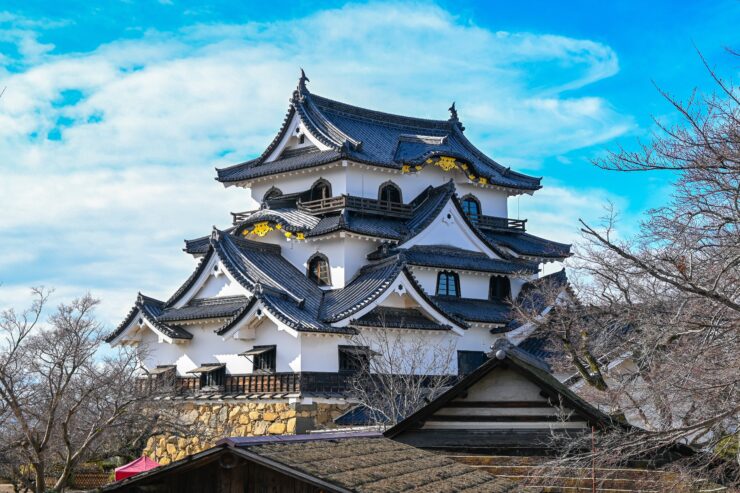After three years of Japanese language self-study, I was ready to explore Japan. As a native New Yorker accustomed to metropolitan areas, I might have the energy and activity of Tokyo, the planet’s most populous city. But I was headed to the rural landscapes outside the city, for a different way to experience Japan – one that moved at a slower pace. As a city graced with natural beauty, deep history, and calming energy, Hikone provided an alternative perspective of Japanese culture.
Hikone is within 100 kilometers of the cities of Kyoto, Osaka, and Nagoya, in Shiga Prefecture, west of Tokyo. It borders Lake Biwa, Japan’s largest lake. The Ibuki Mountains, Shiga’s highest elevation, are to the east. Hikone has a population of only about 100,000, most of whom make a living in manufacturing, natural resource management, and education.
Moving through Hikone’s winding, narrow streets, I was excited to see centers of technical innovation and commercial industry juxtaposed with historical and residential areas that paid homage to the past. I was looking forward to exploring both aspects of the city.
Hikone: Slow Pace, Nature’s Grace
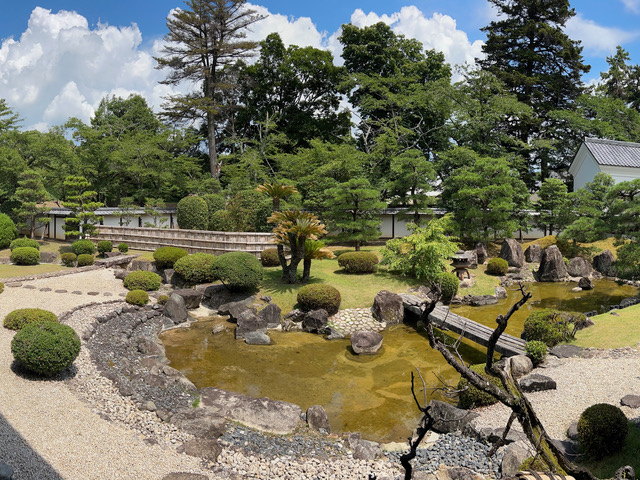
This exploration, during a humid summer week, meant that one day I approached Hikone Castle, a Japanese National Treasure and the city’s most recognized feature. It had a relaxed, low-key vibe. To truly appreciate its historical significance, architectural complexity, and natural beauty, the visit can’t be a quick hit.
Grabbing a walking stick at the base of the 100-meter-high Mount Konki, I followed a stream of visitors making the pilgrimage to reach the castle keep (a fortified tower) at the summit. With my arthritic knee, it was a challenge. But the first time I felt winded, I noticed several climbers, easily 20 years older, gradually moving forward in silence. I adopted their approach, and my journey became a quiet, reflective exercise.
Ascending the spiral path, I took frequent breaks while surveying views of the rustic castle grounds and the modern Hikone cityscape. At the summit, I was grateful for the shaded seating areas steps from the castle keep. More ambitious travelers continued their climb on steep steps within the three-story structure to explore the interior designs used during the Edo period (1603-1868). I just reflected on the beauty of the foothills.
Though I appreciated the time spent exploring Mount Konki, I welcomed the air-conditioned Hikone Castle Museum at the base. I saw art, literature, and textiles in serpentine passageways. At a replica of Hikone Castle’s Front Hall, I experienced a brief glimpse of life during Japan’s pre-industrial era, a much different perspective of Japanese culture from the anime and electronics available in the States.
The Ibuki Mountains
While the Hikone Castle complex is a feat of engineering, its majesty is dwarfed by the Ibuki Mountains. Sturdy footwear and walking sticks used at Hikone Castle might be helpful…after a drive up Ibukiyama Driveway’s 17-kilometer toll road. Thankfully, I wasn’t negotiating the twisting roadway behind the wheel, which allowed me to focus on scanning picturesque natural landscapes and have a more expansive view of the cityscape.
I expected the parking lot to be the end of the vertical journey, but it’s just the jumping-off point for two distinct areas. To the right, Sky Terrace Ibukiyama offered a scaffolded staircase for an expansive view of the foothills. To the left, determined climbers walked trails to reach the 1,377-meter peak of Mount Ibuki to see several impressive natural landmarks, including Lake Biwa and the Japan Alps.
But I skipped more climbing to embrace the Ibuki Mountains’ greatest gift to me: the cooler temps and relaxing breezes of the higher elevation.
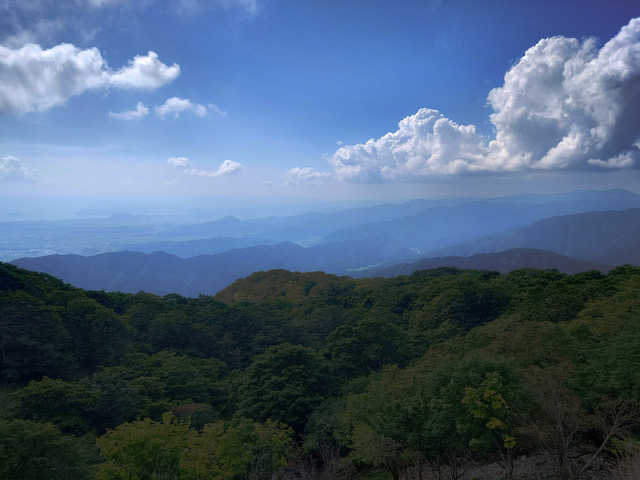
Cultural Connection Via Homestay
Hikone has its share of natural wonders and historical touchstones. But homestays let you live like a local. Full disclosure #1 – I wondered how my nearly 6-foot frame would adjust to quarters intended for a Japanese average height of just over 5 feet.
I was relieved after meeting my “host mother.” Her hugs and smiles relayed warmth and confidence that I would fit in, literally as well as figuratively.
I negotiated the low ceiling as I made my way upstairs, and found a twin bed, desk space, and mini television that reminded me of my undergrad dorm. But the most critical feature was the air conditioning unit in the window, which kept the space several degrees cooler than the rest of the house.
The house was filled with Shoji (sliding partition doors) and tatami mats. I was further reminded that I was in Japan every time I visited the bathroom, with a tricked-out toilet with personal jets and air-drying features (though I was most impressed with the automatic flush function).
Still, the most profound experience was sharing meals with my host mother and grandmother. I savored veggies from their garden and traditional foods, including my favorite, natto – fermented soybeans. We spoke a mix of Japanese and English, providing an intimate cultural connection.
Full disclosure #2 – As a delegate of the Michigan-Shiga Sister State Program, they arranged my homestay. Speaking with contacts within Hikone, they advised searching sites like Airbnb and VRBO for options.
You May Also Enjoy Reading:
Hikone Food Finds
Before my trip to Japan, most of my exposure to Japanese culture was in restaurants where I enjoyed miso soup, seaweed salad, and sushi rolls. So, I was excited to have my first culinary experience in Moriyama at Gon’s Restaurant. The combination of traditional seating on tatami mats and expansive views of Biwa Lake almost made the lunch an afterthought.
But the setting was perfectly suited for a meal of plum and grated yam soba. It was my first experience eating a noodle dish cooled in ice water, and it was ideal for a humid summer day. I’m accustomed to cooking soba noodles from Asian grocers back home, but the tart flavor of Japanese plums combined with freshly made, cooled soba was a new culinary experience.
Beef on Sushi Rice
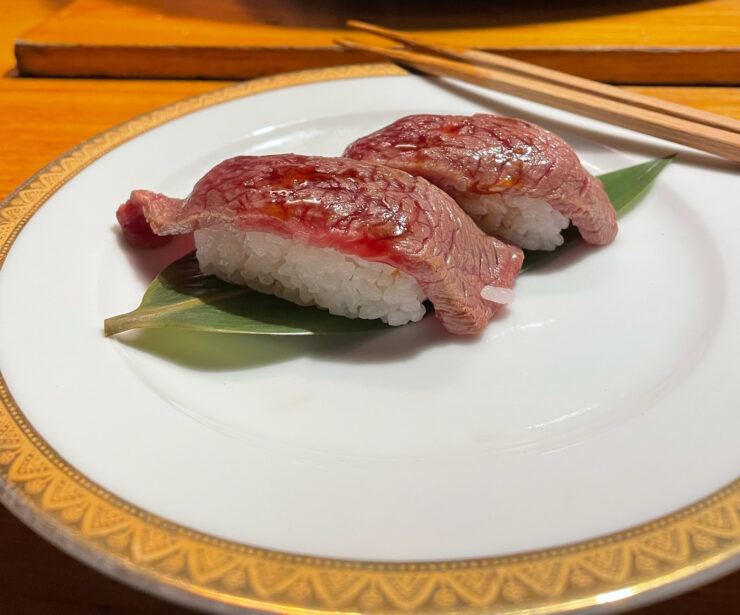
My exploration of the flavors of the Hikone region continued with dinner at Setsugekka. The tatami room’s subdued lighting and modern wood furnishings gave an aura of sophistication well suited to their culinary specialty – Omi beef, Premium Wagyu raised in Hikone’s Shiga Prefecture.
I had the opportunity to experience the distinctive fine grain and sweet flavor of Omi beef atop sushi rice as nigiri. While I was accustomed to nigiri with raw fish, Setsugekka placed thinly sliced, delicately cooked Omi beef on the rice. The pairing of warm beef and short-grain, high-starch sushi rice created a unique, unexpected mouthfeel.
Sweet and Savory Snacks
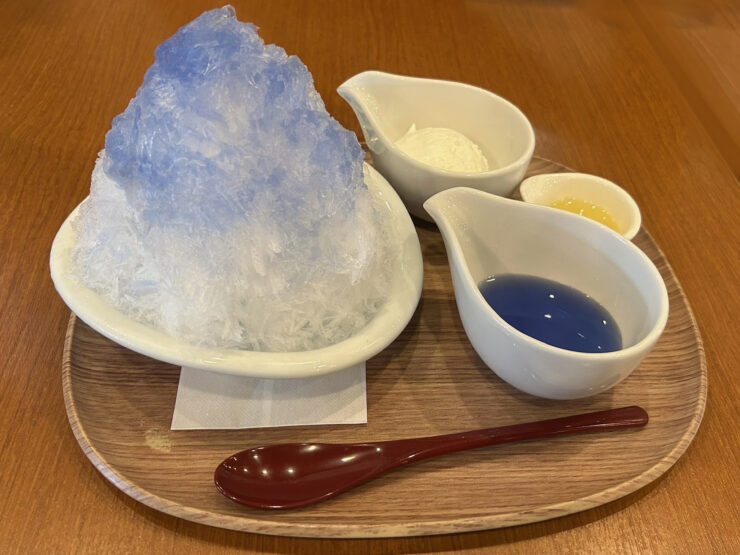
Kakigōri was a relief from the summer heat. Pictured in menus, it reminded me of snow cones I’d have to cool off during New York City’s sweltering summers. But kakigōri is a DIY exercise. Whether you get it at a restaurant, as I did, or on the street, you’re presented with a pile of finely shaved ice with a consistency of snow and a selection of fruit syrups to drizzle on the ice. I chose the blueberry syrup along with whipped cream. Consuming the sweet, soft ice, I imagined it was the closest I’d get to tasting a cloud.
For a savory snack option, I visited Kimura Fisheries’ Kyobashi Branch on Yume Kyobashi Castle Road. It offers dishes that highlight the bounty of Lake Biwa. In contrast to my usual canned sardines, wild sweetfish simmered on an open flame with local soy sauce and sake are plump and deeply flavored. Lake Biwa trout, a rare delicacy known as “Lake Biwa’s Fatty Tuna,” is available grilled, boiled, or smoked.
If You Go
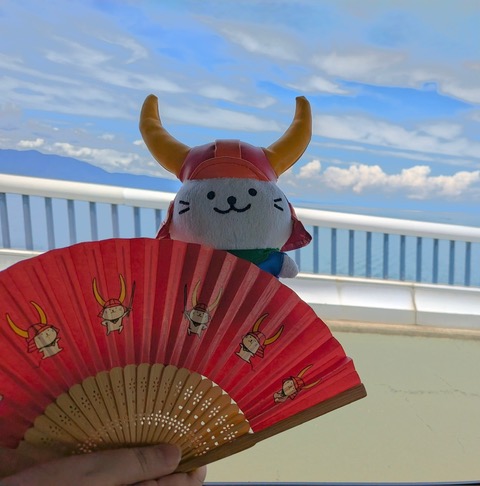
With its distinctive combination of calming landscapes, historical landmarks, and culinary delights, Hikone is a less visited locale within central Japan. It’s a 3 ½-hour train ride from Tokyo.
For a range of experiences to deepen exposure to the Lake Biwa region, Biwako Backroads offers private tours highlighting the natural, historical, and cultural treasures of Hikone.
For the best experience:
- Appreciate Japanese etiquette – I compensated for my limited knowledge of the Japanese language by reading up on greeting, eating, and guest expectations that demonstrated respect for the culture and people of Hikone.
- Travel lightly – Expecting a low-key vibe and wanting to bring back a variety of gifts, I packed only essentials that I could manage over several days.
- Arrange ground transportation – My New York City survivalist driving skills wouldn’t have helped me navigate Hikone’s very narrow streets, and the left-hand driving orientation gave me mild vertigo. Thank goodness for car services.

